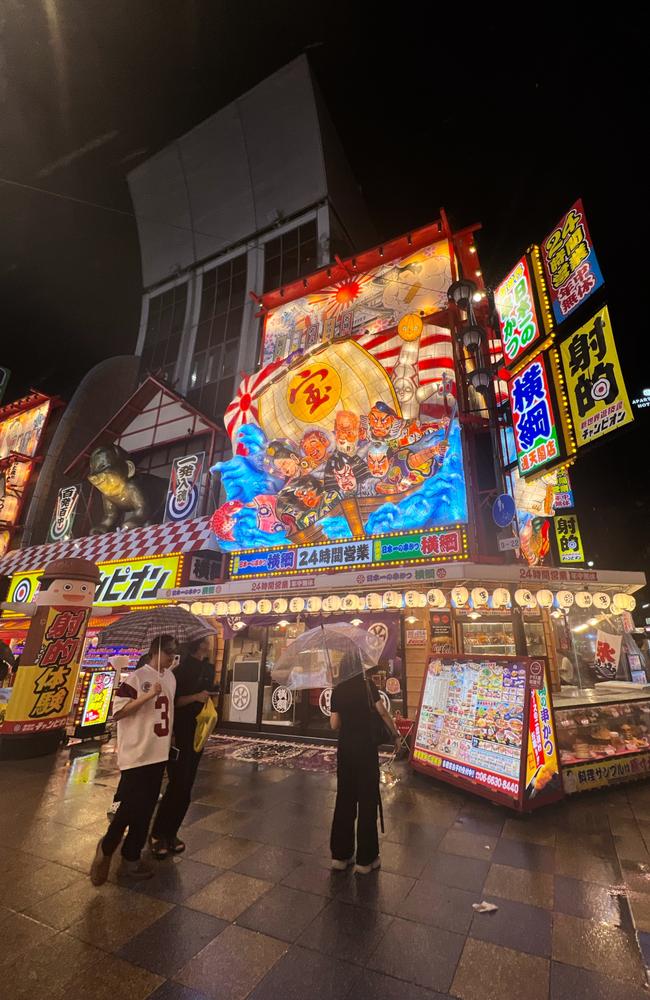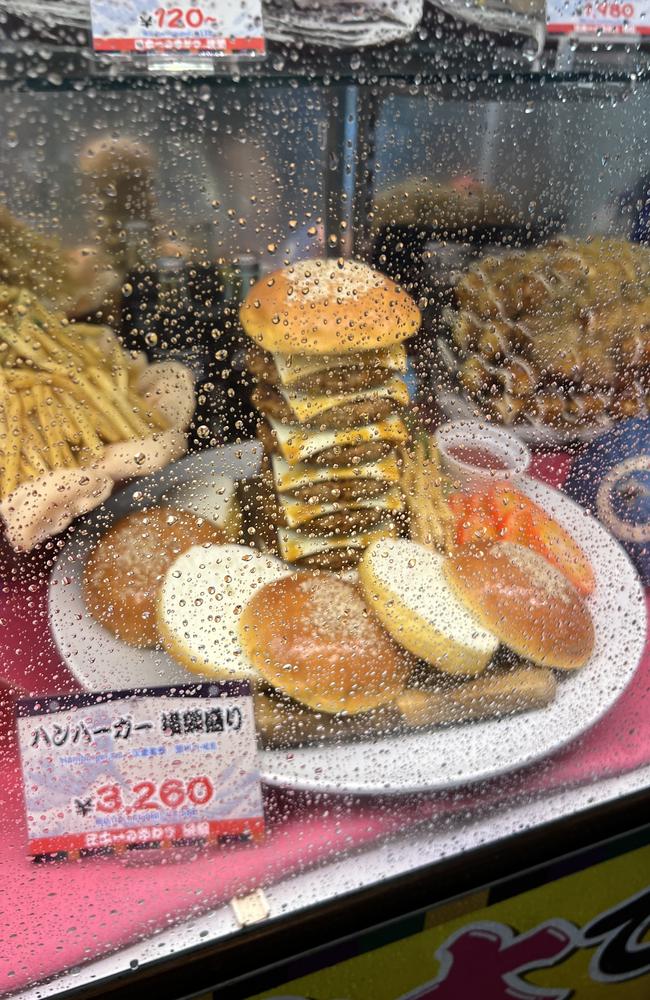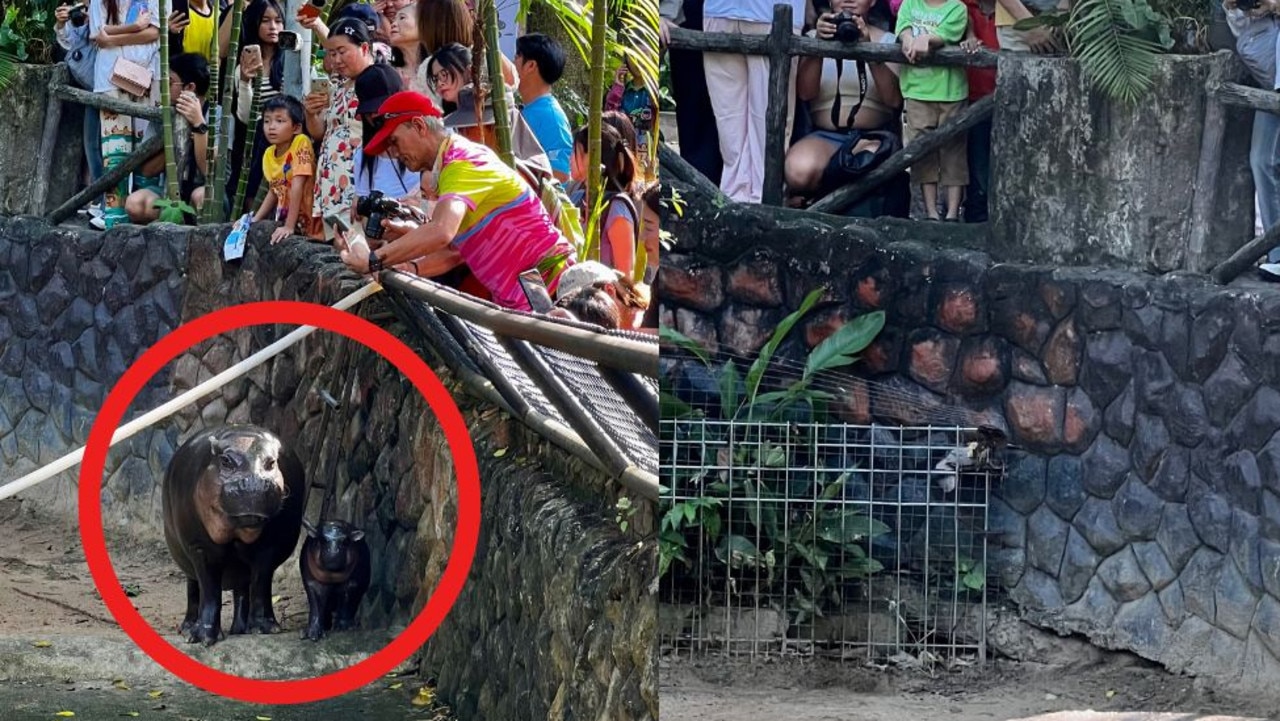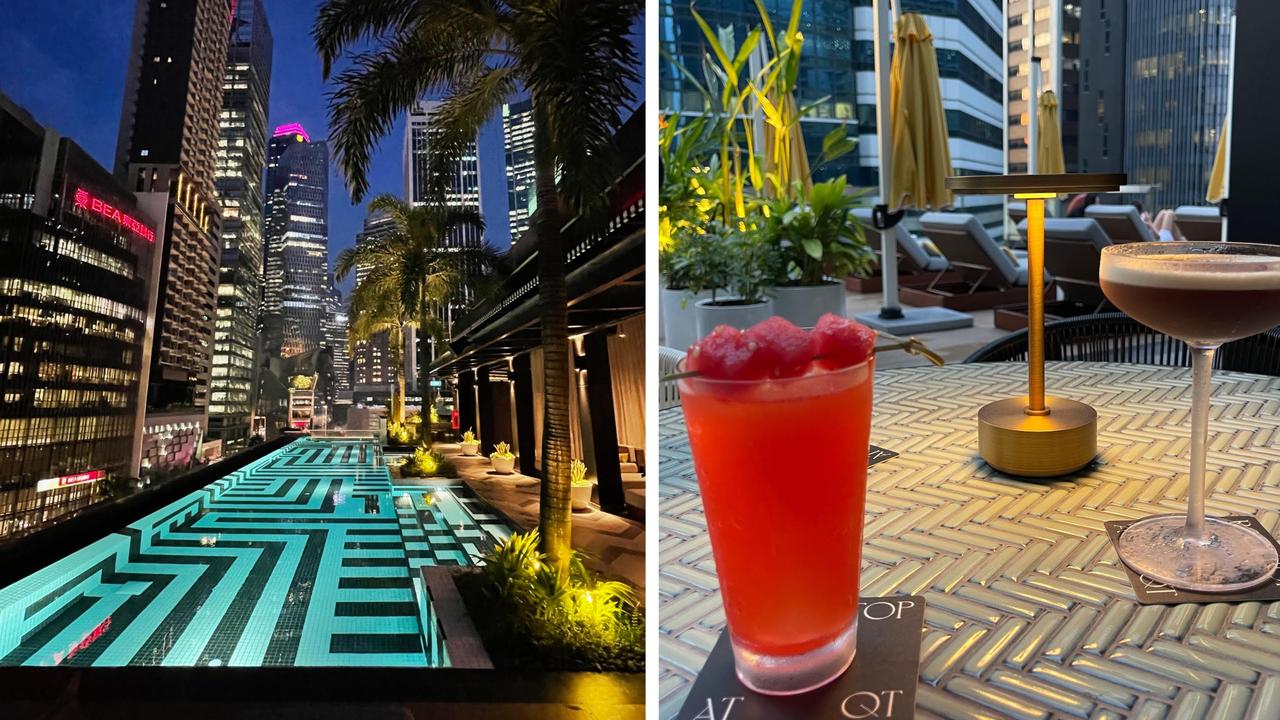’Not what foreigners think’: Truth behind common sight in Japan
A Japanese-Australian food tour guide reveals the big differences between dining in the two countries.
Paper lanterns hanging along the front of restaurants is a common sight while walking the streets of Japan.
It such an iconic element they can be found at Japanese restaurants across the world.
If you assumed the lanterns had a deep historical or cultural meaning, you would not be alone.
But the truth is, they actually have a simple and practical purpose.
Andy Marsden, who runs Osaka Food Tours, explains it is the food or drinks available at the restaurant that is printed on the lanterns so people can see what is on offer when standing metres back in a crowd or across the street.
“There’s nothing religious or historic. It’s not what foreigners think it is. It’s basically a menu,” he told news.com.au.
The name of the business will often be written on some of the lanterns as well.

Another practical approach to luring customers into restaurants in Japan is displaying plastic replicas of meals outside the shop.
While marketing in Australia is known to exaggerate at times and show the best-looking version of a product, Mr Marsden said the size on display in Japan is the size you will get.

Mr Marsden, who has a Japanese mother and Australian father, has lived in Japan for the last 14 years.
He says he loves the culture so much, he will never move back to Australia.
He started food tours in the city about a decade ago just by taking friends around and now has 27 guides working for him.
Dining out is common in the country, with Mr Marsden explaining most local families would eat out twice a week.
One of the big reasons for this is that it is not common to have social gatherings at home.
“People don’t believe me on this one but it is so rare that a friend will go to another person’s place, and even just pop their head in,” he said.
He said most Japanese people do not want others to see the behind-the-scenes of their life because cleanliness and order is so highly valued, and it is rude to be make noise that neighbours can hear.
“It just doesn’t happen, but the good flip side of that is we always meet in restaurants and bars … so it’s good for the economy,” he said.

Aussies are obsessed with Japan
In the first six months of this year, about 462,000 Australians visited Japan – a big jump on the 327,000 that visited pre-pandemic in the first six months of 2019, according to data from the Japan National Tourism Organisation.
One factor driving tourism is affordability, with the Australian dollar strong against the Japanese yen.
Travel Money Group general manager Scott McCullough explained: “We’ve essentially seen an AUD for 100 yen match when exchanging currency.”
There was even a period mid year where the Australian dollar was outperforming the yen.
“Currently 1 AUD is buying roughly 97 yen. Compare this to five years ago where 1 AUD was buying around 74 yen, and you’ll see why it’s such a great time to take advantage of the exchange rate and head to Japan,” Mr McCullough said.
“To put this into context, if you were gearing up for snow season in 2019 and needed JP¥100,000, it would have cost you AU$1,250, but with today’s rates it’ll only cost you AU$1,031.
“To get the best deal, our advice is always to keep a close eye on exchange rates or talk to a foreign exchange expert so you can load your currency card or exchange cash when the Yen is at its best.”
Aussies also have access to cheap flights with budget airline Jetstar operating up to 25 flights a week to the country, flying direct to Osaka from Cairns, Brisbane and Sydney, and Tokyo from Cairns and Brisbane.
The cheapest Cairns-Osaka one-way airfares on sale this week started from $285 for travel between April and August, while Brisbane-Osaka seats start from $373.
The best Sydney-Osaka fares are available for travel between May and July, starting from $404.
Jetstar CEO Stephanie Tully recently told news.com.au the airline was expecting a “really busy” period of Aussies flying to Japan between December and March for the ski season.
She is keen to expand the destinations Jetstar can fly direct to.
“I’d love to be able to fly directly into Sapporo rather than go via Narita [Tokyo],” she said.
This writer travelled to Japan as a guest of Jetstar






